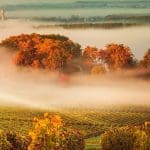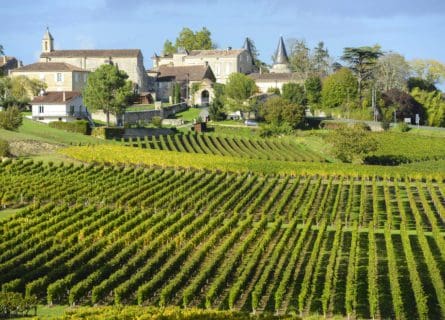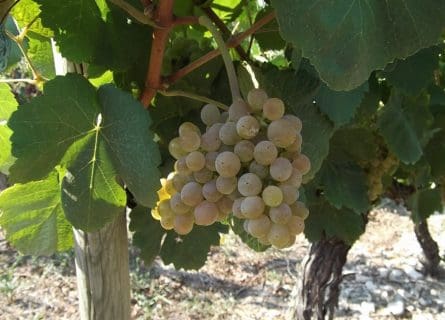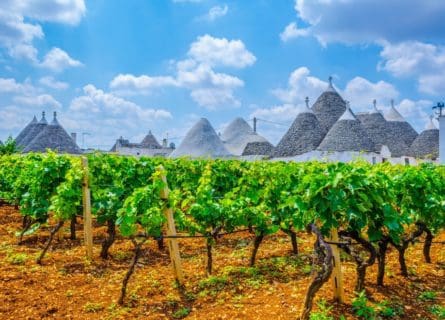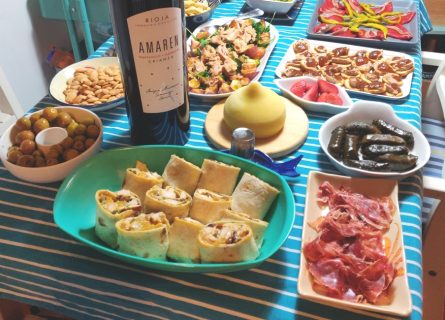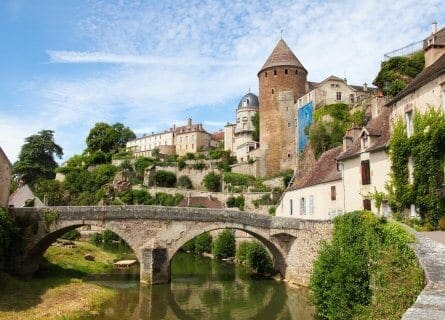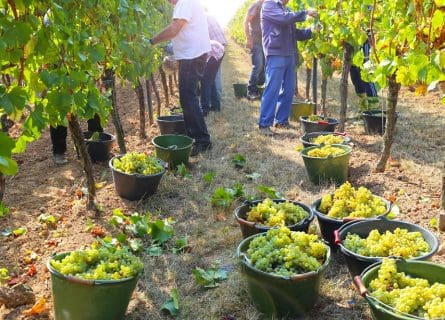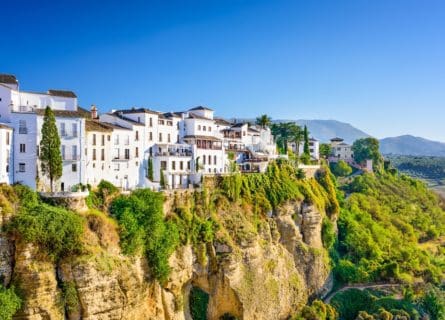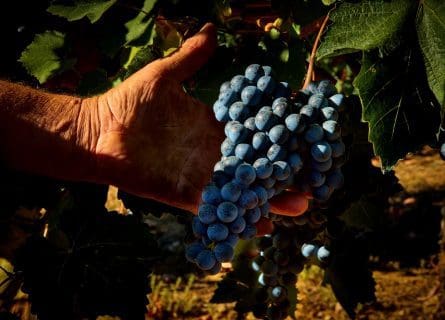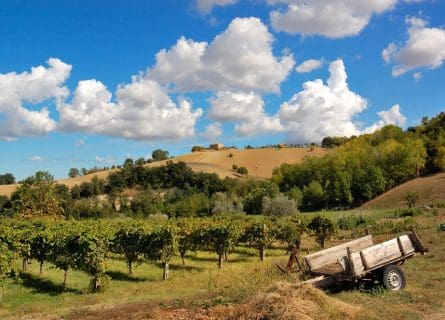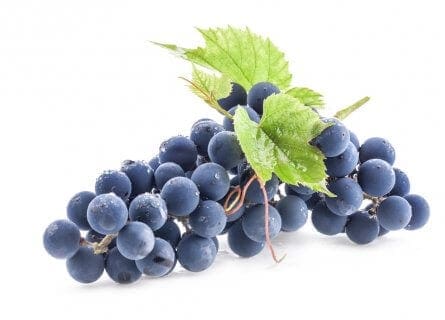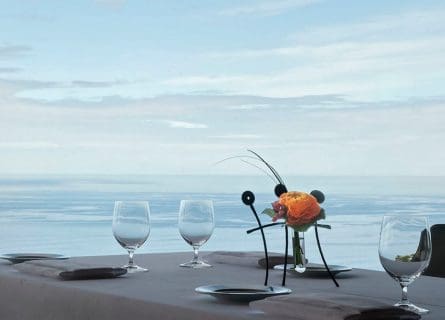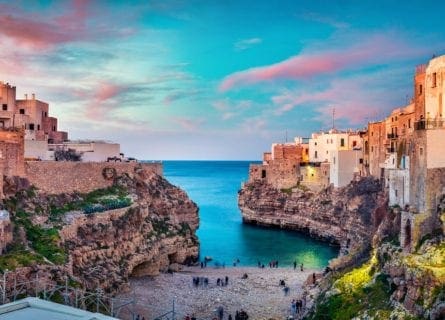Jura Wine Region Guide
Discover the Hidden Gem of French Winemaking: Where Tradition Meets Terroir in Every Bottle
EXPLORE ALL OUR EXPLORE THE BEST FRENCH WINE REGIONS: A COMPLETE GUIDE
Last updated: April 4, 2025
Introduction
The Jura region is positioned between Burgundy and Switzerland in eastern France. It stands out as a notable yet underappreciated wine-producing area, celebrated for its unique vin jaune and diverse wine styles. Its cool climate and varied terrain, from pastoral hills to dramatic, waterfall-strewn outcrops, contribute to the distinctiveness of its viticulture, akin yet distinct from its more renowned neighbors.
Despite being one of France’s smallest wine regions, Jura’s traditional winemaking methods and its array of wines—from red and rosé to sparkling and sweet dessert wines—highlight its rich cultural and viticultural heritage.
Once ignored by consumers, Jura’s esoteric wines are on a roll. Sommeliers have played a big part in their revival, introducing oenophiles to a varied, delicious, and original tranche of grape varieties and tastes; any respectable hipster wine bar now offers at least one or two Jura vintages by the glass.
The region also produces a decent volume of Chardonnay and Pinot Noir, some of which bear more than a passing resemblance to red and white Burgundy. Native grapes, particularly the late-ripening Savagnin and the dark-skinned Pupillin, produce the most intriguing wines. Unlike 20 years ago, these wines are no longer impossible to find.
Discover More About French Wine
History
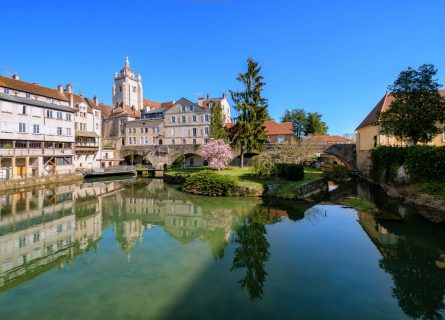
First settled in Gallo-Roman times, Jura became an important stop on the early trade routes between Italy, the Alps, and the Rhine. Indeed, the Romans were very smitten with the dark wooded hills and granite plateaux of the Jura Mountains, planting vines on the lower slopes and in the picturesque valleys.
In late antiquity, the poet Pliny the Younger extolled the virtues of Savagnin, describing it as a “grape that requires no enhancement to produce a wine with a flavor of pitch [pine].” Meanwhile, the Western Roman Empire prospered under the might of the Caesars, conquering territories that extended from Germany to the Sahel in Africa.
Post-Roman Turbulence and Feudal Strife
Following the deterioration of the Roman Empire in AD 476, Gaul (France) descended into chaos; the Jura entered a period of constant unrest, with violent clashes between different factions of Franks, Aquitanians, Visigoths, and Carolingians.
Indeed, this political churn and turmoil continued into the late Middle Ages: in the 13th and 14th centuries, the feudal houses of Savoy, the Dauphine, and Provence fiercely contested Jura and the Alps.
Nevertheless, viticulture thrived in this schismatic period, organized and managed by the Catholic Church. They left the finer details in the capable hands of Cistercian and Benedictine monks, operating out of their monasteries dotted across the region. Meanwhile, the province remained independent until France and Savoie (Savoy) united in 1860, resulting in its division into two départements: Savoie and Haute-Savoie.
Of course, this had little consequence for the farmers of Jura. However, the arrival of the phylloxera louse in 1879 was a devastating event that changed the face of wine growing forever. The pest, accidentally ‘imported’ from the US, killed millions of vines in the late 19th century, causing economic chaos across France’s wine sector.
Alexis Millardet, an ingenious botanist and mycologist native to the Jura, pioneered the only viable solution. Millardet realized that American vines were immune to the disease and that regrafting European plants onto American rootstock would be France’s salvation.
Modern Viticulture and Emphasis on Quality
However, this process spanned many years, with severe casualties: cultivators worked over 20,000 hectares in the Jura in the late 1800s. Today, cultivators grow just over 2000 hectares of prime vineyards in the region, producing a broad range of styles. With the buy-in of its grower community and an overriding emphasis on low yields, Jura has maintained its sharp focus on quality since the mid-20th century.
Geography and terroir
Few oenophiles are indifferent to the bucolic splendor and peaceful tranquility of the Jura. Stretching for over 250 kilometers along the French-Swiss border, it is the most unspoiled and timeless region in eastern France. To the west are the vineyards of Burgundy – Geneva, and its splendid food scene lies to the east. It is an area of wooded hillsides, verdant scenery, and pastoral farming, with approximately 2000 hectares given over to vineyards; 80 kilometers encompass the Jura vignoble within the département, beginning just north of Arbois and extending southwest to Baume-les-Messieurs. The zone has five key appellations: Arbois, Côtes du Jura, Chateau-Chalon, L’Étoile, and Cremant de Jura.
Terroir and Climatic Similarities with Cote d’Or:
While discussing the terroir and climate of Jura, critics often make (favorable) comparisons with the Cote d’Or. This is hardly surprising: growers have long been influenced by their more famous neighbor, and the volume of Chardonnay cultivated in Jura increases yearly. So, too, the soils and weather conditions show broad similarities – enthusiasts celebrate Jura for its Jurassic limestone terroir that dates back over 200 million years. Indeed, the AOC L’Étoile takes its name from the tiny, star-shaped fossils in the soil. Moreover, similar to the Cote d’Or, the best climats (vineyard sites) are located on middle slopes facing south and southeast toward the morning sun. The calcareous soils of the zone are rich in minerals, well-drained, and able to store adequate moisture reserves in the summer months. Overall, the conditions are benign and highly suited to growing quality wine.
Like Burgundy, Jura’s climate is broadly classified as continental: warm summers and cold winters. However, unlike the gentle inclines of the Cote d’Or, the terrain in Jura is far more undulating, with vineyards rising to 350 meters above sea level in certain places. Winters can be very severe in Jura’s hills and vertiginous slopes; however, conditions are less extreme in the lower-lying areas found on the valley floors.
Winemaking and regional classifications
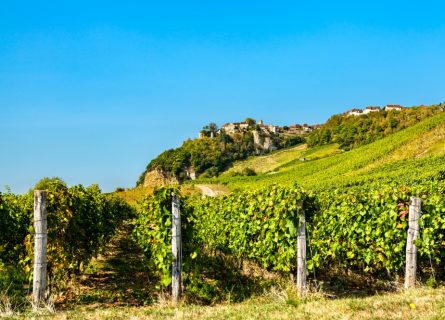
It is remarkable to find such a broad range of wine styles in such a compact region, from the sherry-like vin jaune to Arbois’s exquisite red Burgundy imitations. Super-sweet vin de paille, meanwhile, exists alongside light reds and nutty dry whites—an eclectic mix of flavors that will appeal to sommeliers and wine geeks alike.
Oxidative Aging Techniques
Yet, your first encounter with Jura wine will likely involve Chardonnay and/or Pinot Noir. Traditionally, producers in the region would distinguish themselves from their Burgundian counterparts by exposing the wines to high levels of oxygen during aging, creating a very funky and aromatic expression of these two noble varieties. Chardonnay and the native Savagnin blend exceptionally well together, producing a complex white renowned for its vigor and distinctive aromas of hazelnuts and marzipan.
However, locals now produce the most commercially successful Pinot Noir in a non-oxidative style they call floral; this style accounts for a growing volume of Jura’s exports, capitalizing on the insatiable demand for this magnificent grape. The best examples resemble Volnay and Premier Cru Beaune, celebrated for their soft tannins, bright, juicy fruit, and fine acidity. As international demand continues to rise, so does the average bottle price.
Vin Jaune
Of course, there is much to admire in Jura’s fruit-forward and well-made Pinot Noirs. However, I personally find more excitement in the area’s richly oxidative – and inimitable – dry white wines. In the 19th century, Jura’s iconic yellow wine, vin Jaune, was the height of fashion, drunk with relish by the French aristocracy.
Sommeliers often (and not unreasonably) compare it to Sherry because of the long periods of oxidative aging and its pungent bouquet of flor (yeast), grilled nuts, and lanolin. Winemaking is a practiced art – a process that requires patience and immense skill. It begins with harvesting very ripe Savagnin berries rich in sugars and acids.
After fermentation, winemakers let the base wines mature in old Burgundian barrels for about six years before bottling. The staves allow a considerable amount of oxygen ingress during the aging period. However, a thin layer of the protective layer of yeast will also appear, floating on top of the wine.
As it evaporates and oxidizes, a myriad of complex aromas will develop as the yeast prevents total spoilage. It is then traditionally housed in a 62cl bottle known as a clavelin. The deep, yeasty flavors and rich texture make vin jaune a wine for the dinner table. Try it with roast duck or poulet de Bresse.
Today, some of the greatest vin jaunes are made in the Château-Chalon AOC. According to the regulations, it is the only white style that can legally reference Château-Chalon on the label. That said, producers of the Cotes de Jura also market some very impressive examples of the genre, in addition to dry whites fermented in stainless steel: fresh and fruity Savagnin for early consumption. Nevertheless, they are probably more crowd-pleasing than the esoteric vin jaunes.
Meanwhile, growers are attached to their indigenous red grapes, even if the global market remains aloof. The most popular dark-skinned variety is the enigmatic Poulsard, sometimes called Ploussard, which finds its natural home in the green valleys surrounding Arbois. When gently fermented in stainless steel and aged in neutral wood, Poulsard yields a deeply-colored yet delicate style of red, with soft tannins and red berry fruit. The rare Trousseau is another local curiosity, renowned for its intense color, high alcohol, and black forest bouquet. If you manage to find some, serve it with game.
However, Cremant de Jura belongs at the start of your meal. Some of France’s most intriguing sparkling wines, a potent blend of Chardonnay, Pinot Noir, and Trousseau, are produced here. Crémant du Jura rosé is another rising star, based on at least 50 percent Pinot Noir or Pinot Gris.
Both categories can only be made via the traditional method, aged for 12 months before release. Well-made, delicious, and very affordable, Cremant de Jura is the height of fashion in Lyon, Paris, and Dijon.
Alas, the same cannot be said for Jura’s dwindling supply of sweet wines. However, certain winemakers maintain the vin de paille tradition, an unctuous dessert wine made from Chardonnay, Savagnin, and/or Poulsard. Similar to Italy’s cherished passito wines, the berries undergo a meticulous desiccation process in carefully controlled, ventilated conditions until the January following the harvest.
The raisined grapes are then fermented to about 15% alcohol and matured in old barrels for two to three years. The results in bottle are memorable: aromatically expressive and incredibly rich concoctions of fruit, acid, and alcohol. As a niche style, they continue to find a home in the wine cellars of Michelin-starred restaurants, particularly in neighboring Switzerland.
Facts & Figures
Key wine styles
- Dry white and red wines; vin jaune; vin de paille (dessert wines);
- Traditional method sparkling wine
Appellation structure
- Arbois, Côtes du Jura, Chateau-Chalon, L'Étoile, and Cremant de Jura AOC
Hectares under vine
- 2,000
Average annual production
- 11 million bottles per annum
Approximate number of producers
- 230
The lowdown
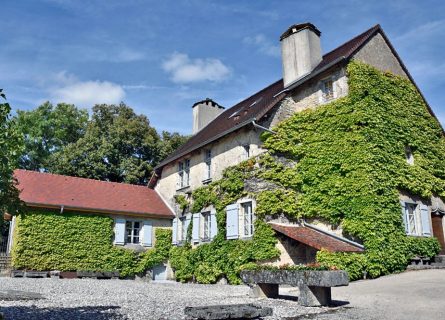
Although the glory days of the 19th century are a distant memory, Jura’s community of winegrowers remains in high spirits. After much hard work (and proselytizing from sommeliers and key influencers), the region has carved out a successful niche as a leading source of weird and wonderful grape varieties: Savagnin and Poulsard are hardly seen outside France. This has caught the attention of restaurant buyers and independent merchants, who have, thus far, been most receptive to the rich, spicy tang of vin jaune and the superior quality of Arbois blanc.
Indeed, although Jura only exports a relatively small volume of wine, it enjoys several advantages over its rivals. The most important is the human factor: Jura is blessed with many smaller, quality-minded, vineyard-focused wineries, and more are emerging with each new vintage. Up-and-coming domaines are seeking out higher and cooler terroirs in the hills of eastern France to combat global warming, wisely exploiting altitude and all the benefits of diurnal temperature variation. Fortunately, there is no paucity of steep slopes in the Jura, where conditions can be distinctly brisk – all the better for maintaining acidity in the wines!
Then, there is the wonderful diversity of grapes and styles. Pinot Noir and Chardonnay are blossoming in the hills of Arbois, while Trousseau is going from strength to strength; the old rusticity of the past has been tamed with better viticulture and winemaking. Look out for Cremant de Jura if you spot a bottle on the wine list. It offers an unbeatable price-to-quality ratio and bags of upfront fruit, supported by a vigorous mousse and great freshness.
That last word is integral to understanding Jura’s appeal in the 21st century. Many regions—and producers—look to provide ‘maximum impact’ in their top labels with ripeness, concentration, and maturation in new oak. However, the Jura philosophy leans heavily into minerality and terroir expression; over-extracted and overoaked wines are rarely seen today. Elegant, well-made, and subtly fragrant, the best wines of the Jura are world-beaters.
Key Grape Varietals
-
Chardonnay
Chardonnay is a green-skinned grape varietal native to the Burgundy wine region in France and one of the most popular varieties worldwide.
Find out more -
Savagnin Blanc
Savagnin Blanc, an ancient white grape from France's eastern sub-alpine areas, is pivotal in creating the distinctive Vin Jaune and Vin de Paille of the Jura region. Unlike the similarly named Sauvignon Blanc, it is known for its part in making sherry-like and sweet concentrated wines. Often blended with Chardonnay, Savagnin is celebrated in Vin Jaune, which matures under flor yeast, developing rich, nutty flavors and a deep yellow color.
-
Poulsard
Poulsard is a red-skinned grape from northern Jura, France, celebrated for its thin skins, pale color, and delicate perfumes. It faces viticultural challenges such as susceptibility to spring frosts, mildew, coulure, and sunburn due to its fragile berry skin, demanding vigilant vineyard management. Despite these challenges, Poulsard is versatile, contributing to white, rosé, red, and sparkling wines.
-
Pinot Noir
Pinot noir is a light-bodied red wine varietal closely related to the Vitis vinifera grape and produces the most sought-after red wines in the world.
Find out more -
Trousseau
Trousseau, a dark-skinned grape from Jura, France, is known for its cherry-red wines with rich berry flavors and high alcohol potential due to its natural sugars. This grape has spread to Spain and Portugal, where it's known as Bastardo, Merenzao, and Verdejo Negro, among other names. Despite its indigenous roots in Jura, Trousseau is becoming rare there, overshadowed by international varieties.
Jura gastronomy
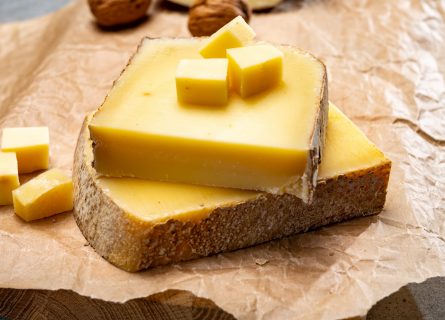
From the heady delights of vin jaune to Fondue and Jesus de Lyon sausage, Jura is a gastronomic tour de force. Many of the best restaurants can be found in the regional capital, Besancon, especially in the old Battant quarter and around the river. Local highlights include Morteau sausage with pomme purée, chicken slowly braised in Savagnin, freshwater fish, and wild duck – delicious is the word.
Wineries Recommended by Cellar Tours
-
Anne et Jean-Francois Ganevat
-
Benedicte & Stephane Tissot
Read more -
Domaine Berthet-Bondet
Read more -
Domaine Jean Macle
-
Domaine Labet
-
Domaine du Pelican
Read more -
Lucien Aviet
-
Marcel Cabelier
Further Reading: Discover More Related Blog Content
More information
If you would like us to customize an exclusive luxury tour, contact us and let us know your travel plans. We offer luxury food and wine tours for private groups of a minimum two guests. In addition, all of our private, chauffeured tours are available year-round upon request.

